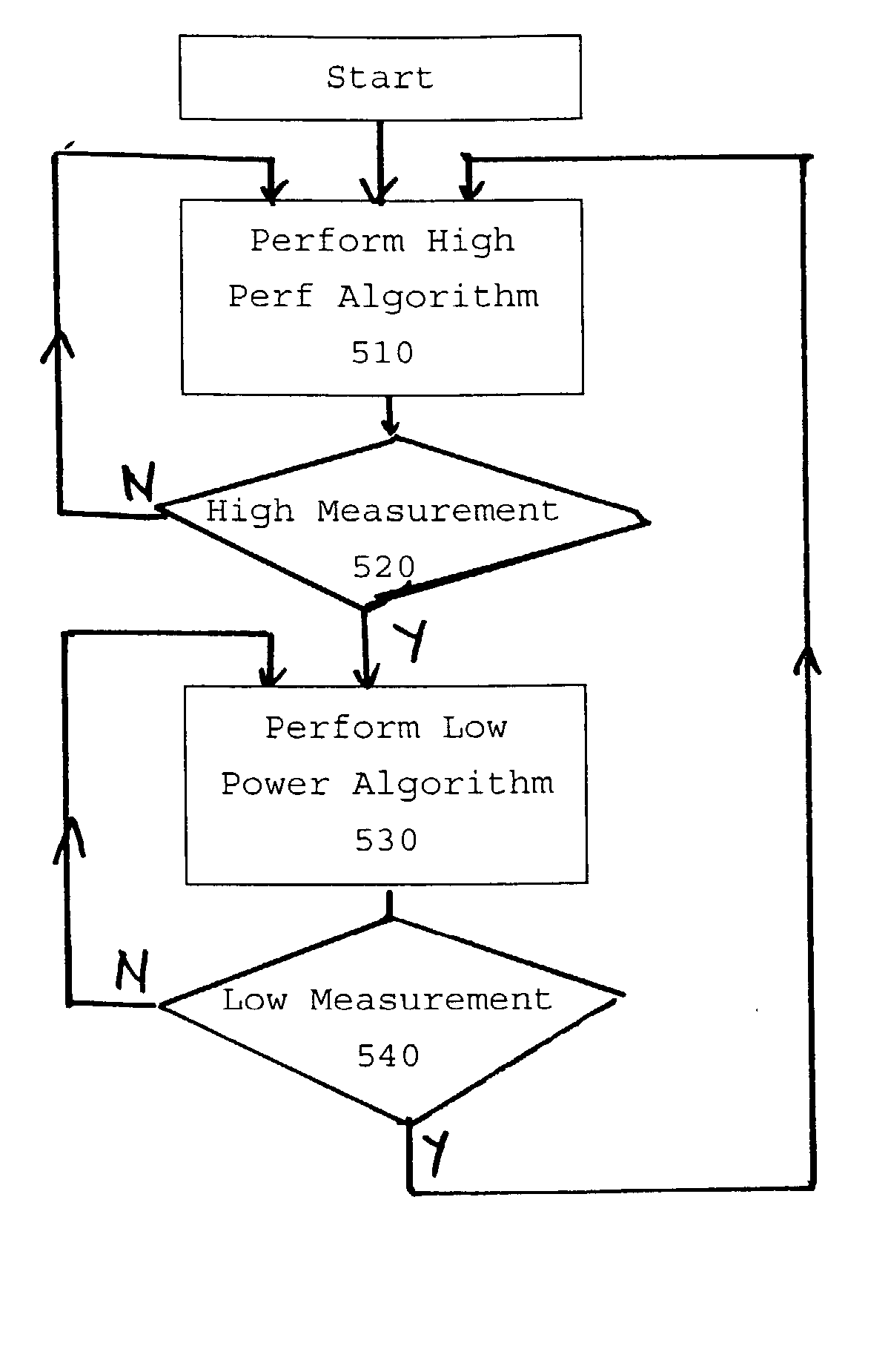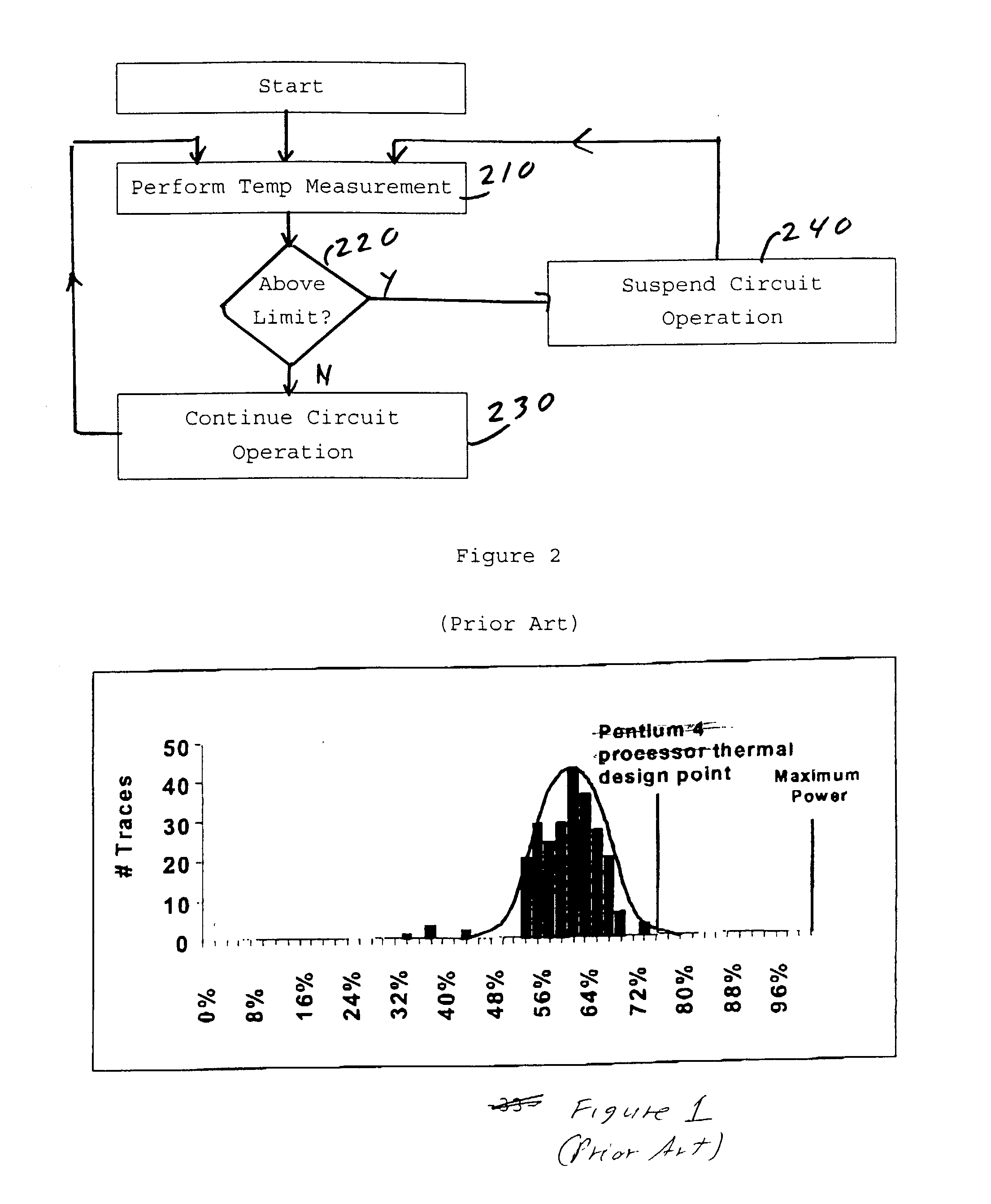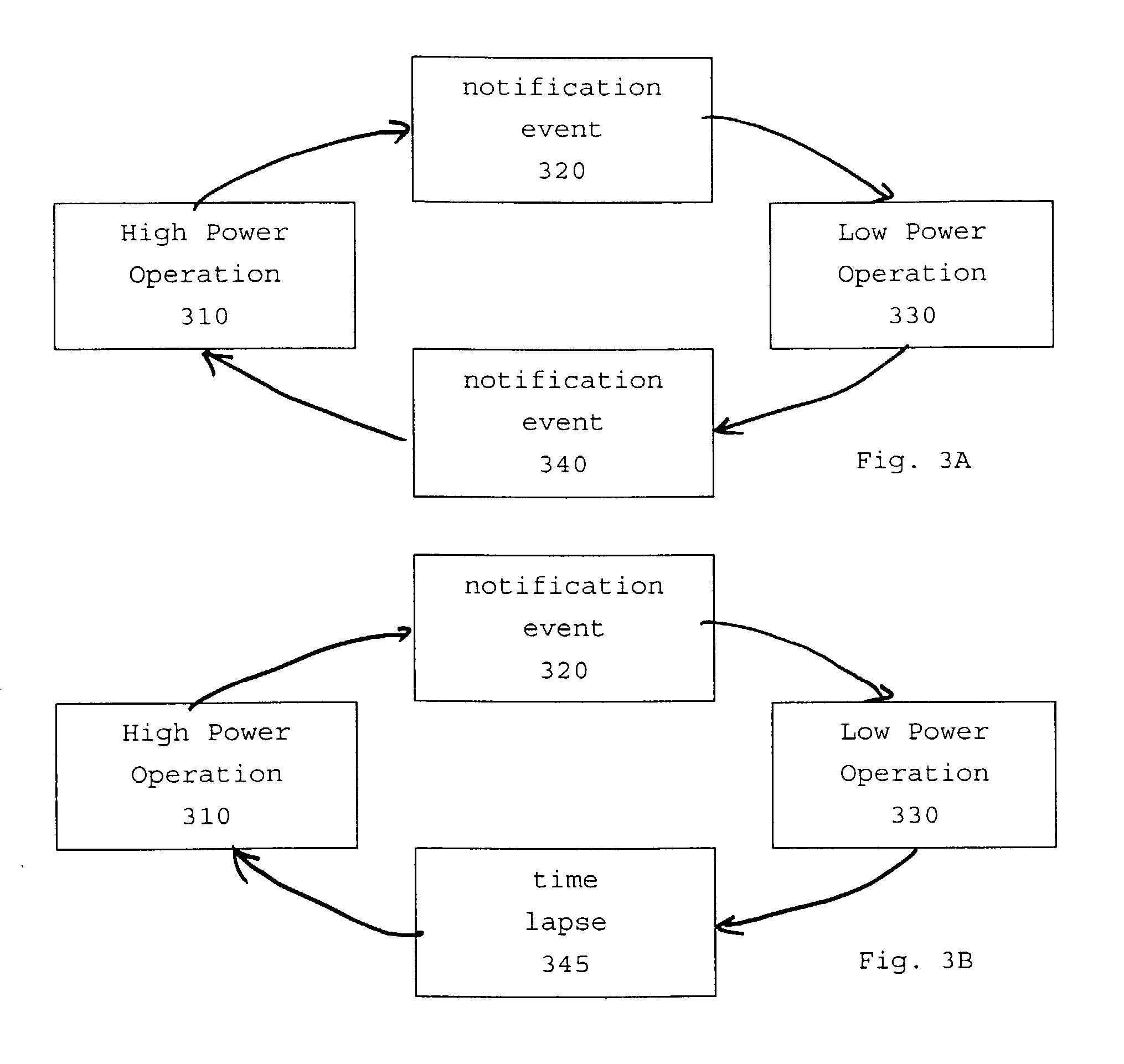Method and apparatus for software-assisted thermal management for electronic systems
a technology of electronic system and software, applied in the direction of liquid/fluent solid measurement, instruments, sustainable buildings, etc., can solve the problems of power dissipation, major limitation of high-performance microprocessor design, and inability to solve in lower-end systems,
- Summary
- Abstract
- Description
- Claims
- Application Information
AI Technical Summary
Problems solved by technology
Method used
Image
Examples
first embodiment
[0055] Referring now to FIG. 5, there is shown software operation in conjunction with a thermal control circuit in accordance with the present invention. The software has been adapted to execute in a first performance-optimized and a second power-optimized mode of operation in response to notification events of a thermal monitor circuit indicating entrance and exit from critical power-dissipation levels.
[0056] Upon system start, software enters processing in step 510. In step 510, the software executes a performance-optimized version of one or more algorithms. In step 520, it is checked whether a notification event indicating critical power-dissipation levels has occurred. If no event is present, then processing continues in step 510. Otherwise, processing transfers to step 530.
[0057] In step 530, a power-optimized version of one or more of the employed algorithm (i.e., an algorithm with lower power dissipation) is employed to continue processing. In step 540, it is checked whether ...
second embodiment
[0060] Referring now to FIG. 6, there is shown software operation in conjunction with a thermal control circuit in accordance with the present invention. The software has been adapted to execute one or more algorithms which have been designed to be guided by a set of configuration parameters which can affect the power dissipation, e.g., the resolution of images drawn, the number of frames drawn per second, etc.
[0061] Upon system start, software enters processing in step 610. In step 610, system initializes the start-up parameters. In step 620, the system performs one or more algorithms under the control of start-up parameters that have been previously determined.
[0062] In step 630, after a time interval that may be fixed or may be adaptable in response to CPU activity, a test is performed to indicate if a notification event indicating a high measurement has occurred. If an event has occurred, control transfers to step 640. Otherwise, control transfers to step 650.
[0063] In step 640,...
PUM
 Login to View More
Login to View More Abstract
Description
Claims
Application Information
 Login to View More
Login to View More - R&D
- Intellectual Property
- Life Sciences
- Materials
- Tech Scout
- Unparalleled Data Quality
- Higher Quality Content
- 60% Fewer Hallucinations
Browse by: Latest US Patents, China's latest patents, Technical Efficacy Thesaurus, Application Domain, Technology Topic, Popular Technical Reports.
© 2025 PatSnap. All rights reserved.Legal|Privacy policy|Modern Slavery Act Transparency Statement|Sitemap|About US| Contact US: help@patsnap.com



